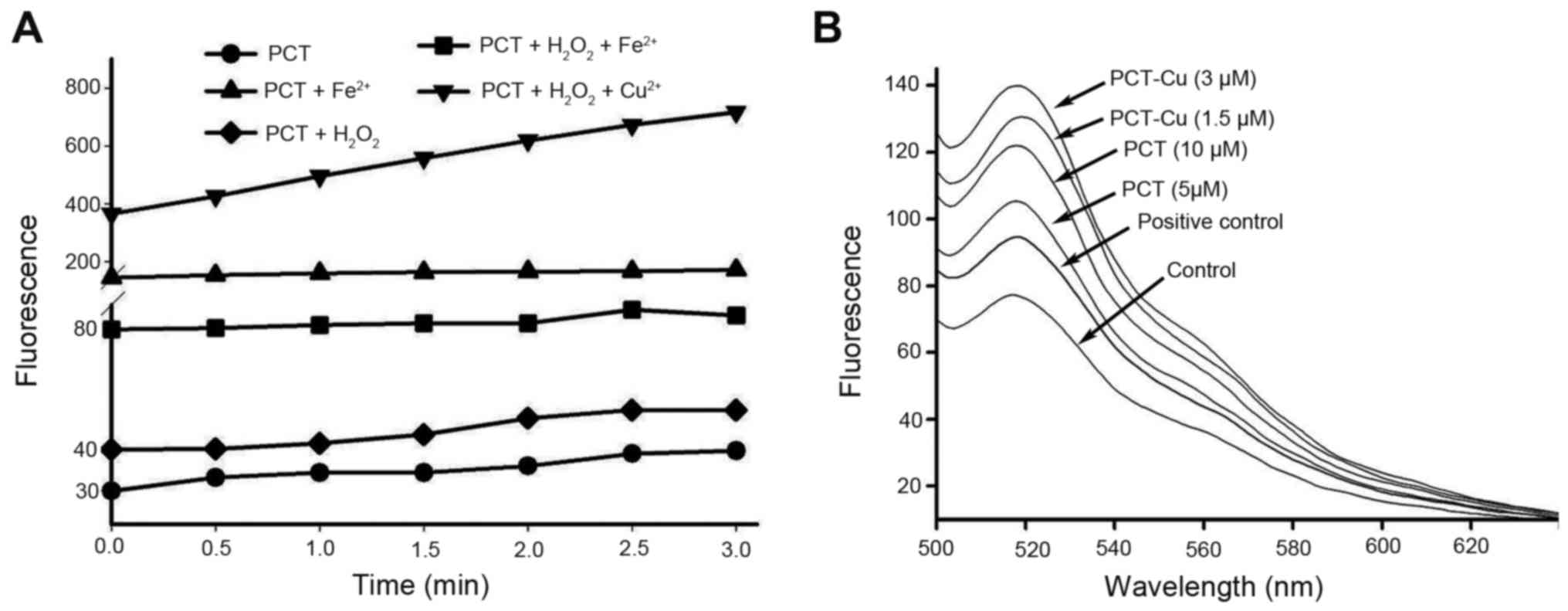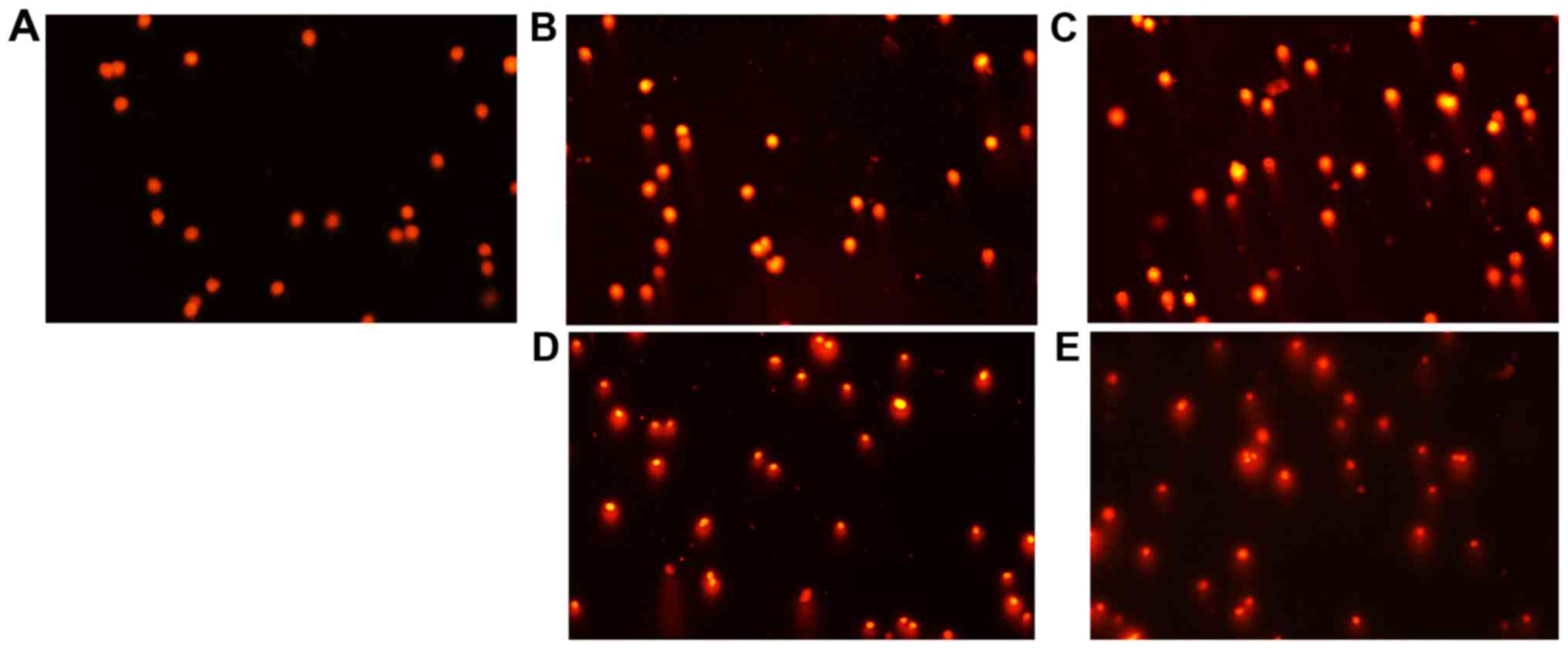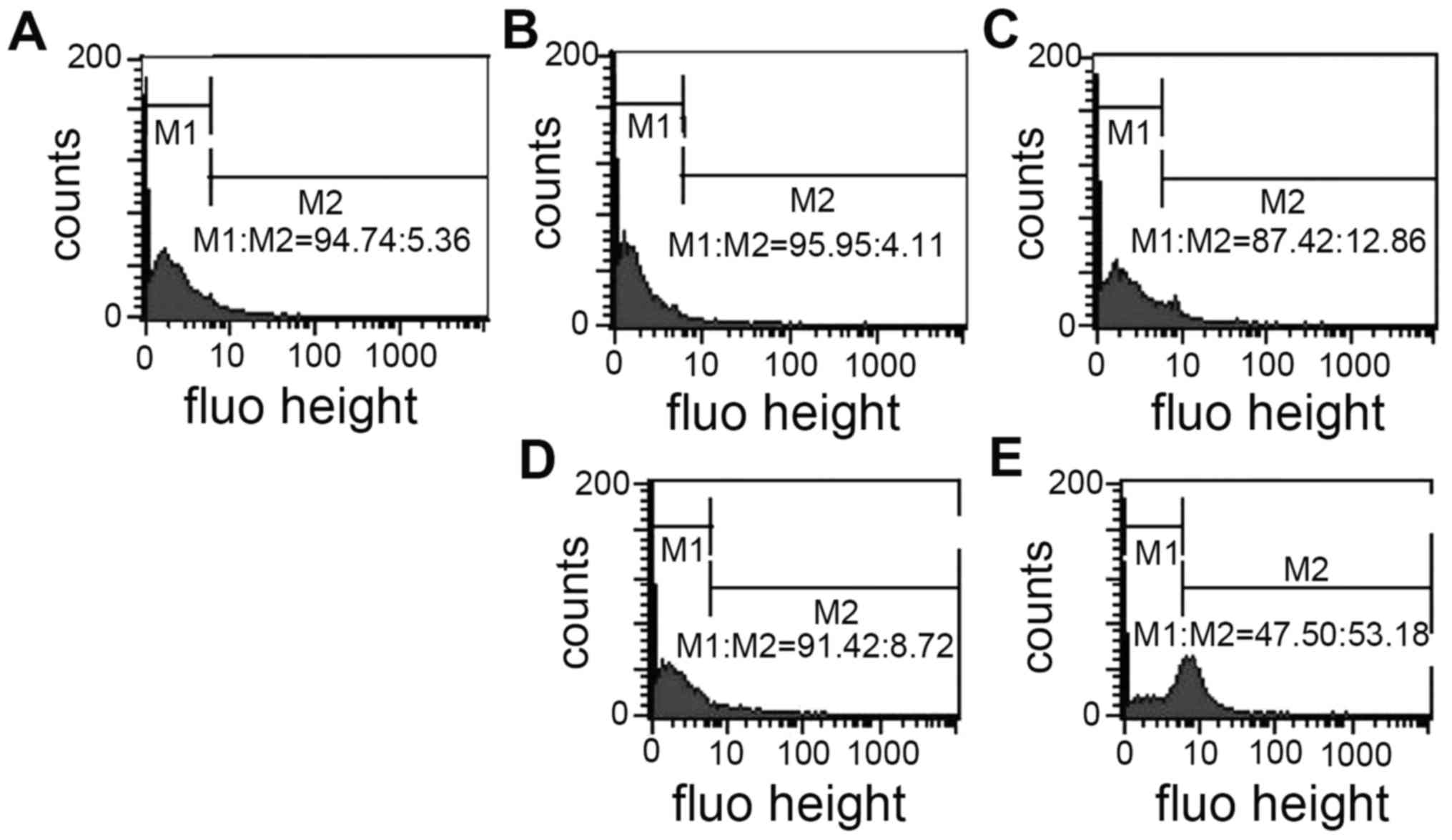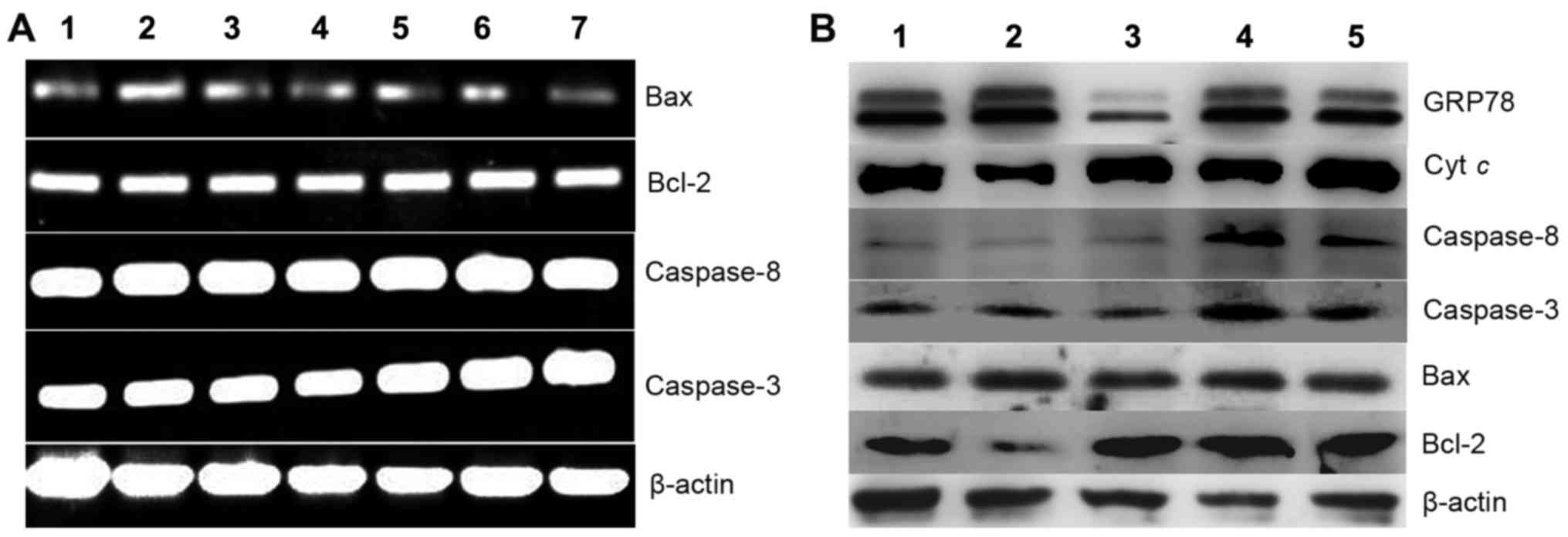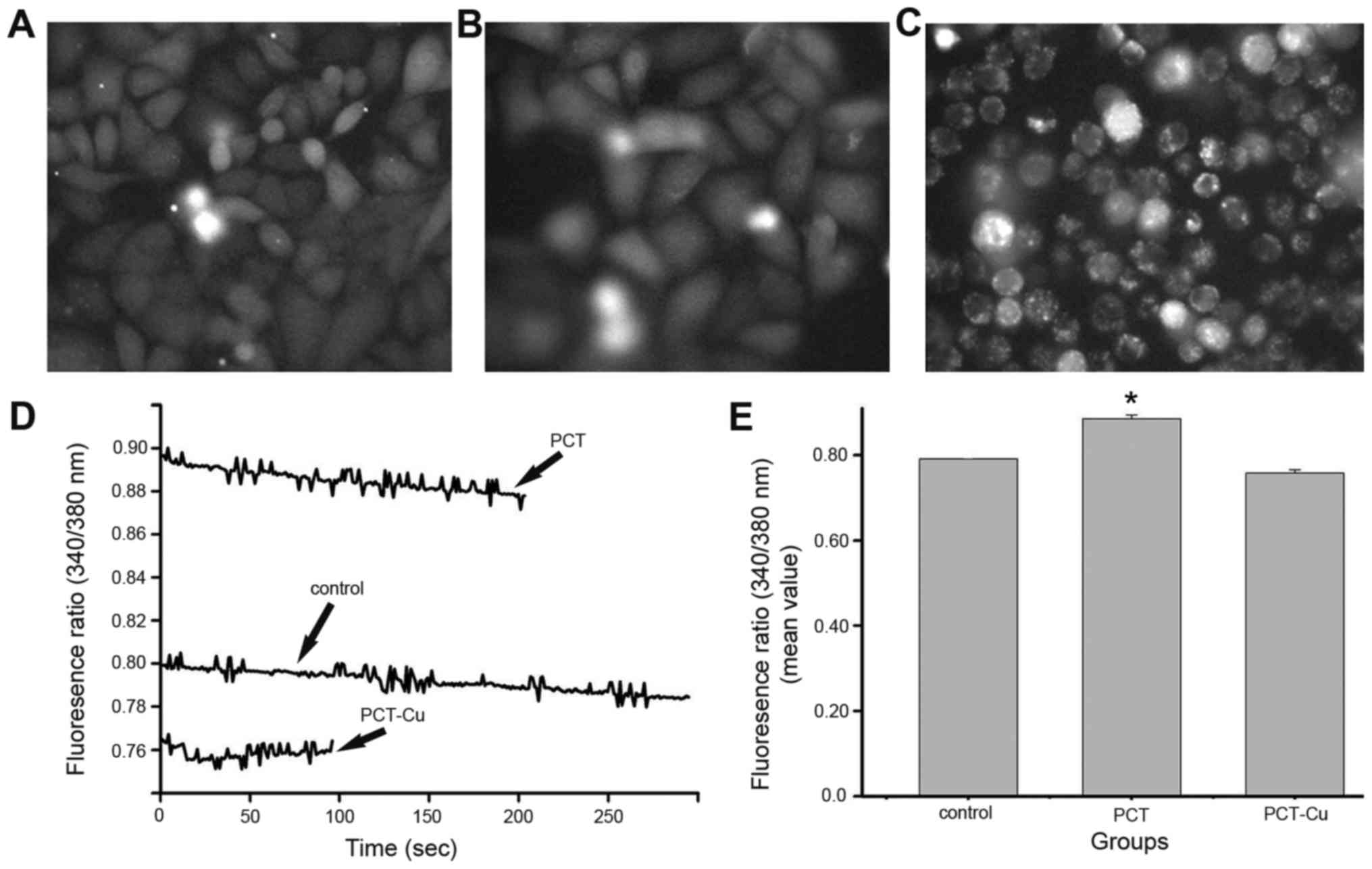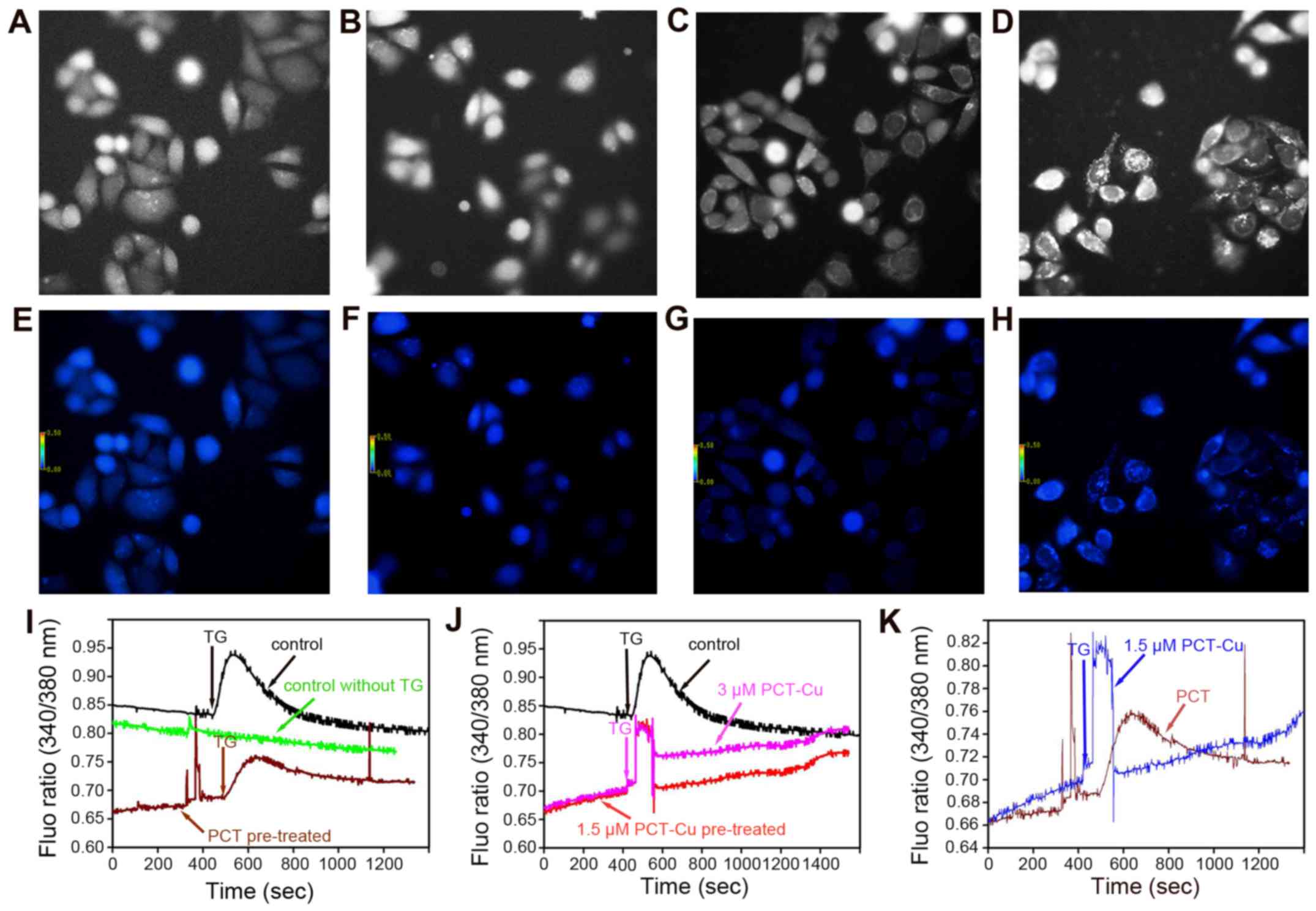|
1
|
Husain K, Bhat AR and Azam A: New Pd(II)
complexes of the synthesized 1-N-substituted thiosemicarbazones of
3-indole carboxaldehyde: Characterization and antiamoebic
assessment against E. histolytica. Eur J Med Chem. 43:2016–2028.
2008. View Article : Google Scholar : PubMed/NCBI
|
|
2
|
Rodríguez-Argüelles MC, Tourón-Touceda P,
Cao R, García-Deibe AM, Pelagatti P, Pelizzi C and Zani F:
Complexes of 2-acetyl-γ-butyrolactone and 2-furancarbaldehyde
thiosemicarbazones: Antibacterial and antifungal activity. J Inorg
Biochem. 103:35–42. 2009. View Article : Google Scholar : PubMed/NCBI
|
|
3
|
Quach P, Gutierrez E, Basha MT, Kalinowski
DS, Sharpe PC, Lovejoy DB, Bernhardt PV, Jansson PJ and Richardson
DR: Methemoglobin formation by triapine,
di-2-pyridylketone-4,4-dimethyl-3-thiosemicarbazone (Dp44mT), and
other anticancer thiosemicarbazones: Identification of novel
thiosemicarbazones and therapeutics that prevent this effect. Mol
Pharmacol. 82:105–114. 2012. View Article : Google Scholar : PubMed/NCBI
|
|
4
|
García-Tojal J, García-Jaca J, Cortés R,
Rojo T, Urtiaga KM and Arriortua IM: Synthesis and spectroscopic
properties of two pyridine-2-carbaldehyde
thiosemicarbazonecopper(II) compounds: [CuX2(C7H8N4S)]·H2O (X= Br,
Cl). Crystal structure of the bromo complex. Inorg Chim Acta.
249:25–32. 1996. View Article : Google Scholar
|
|
5
|
Chandra S, Parmar S and Kumar Y:
Synthesis, spectroscopic, and antimicrobial studies on bivalent
zinc and mercury complexes of 2-formylpyridine thiosemicarbazone.
Bioinorg Chem Appl. 2009:8513162009. View Article : Google Scholar :
|
|
6
|
Baldini M, Belicchi-Ferrari M, Bisceglie
F, Capacchi S, Pelosi G and Tarasconi P: Zinc complexes with cyclic
derivatives of alpha-ketoglutaric acid thiosemicarbazone:
Synthesis, X-ray structures and DNA interactions. J Inorg Biochem.
99:1504–1513. 2005. View Article : Google Scholar : PubMed/NCBI
|
|
7
|
Pelosi G: Thiosemicarbazone metal
complexes: from structure to activity. Open Crystallogr J. 3:16–28.
2010. View Article : Google Scholar
|
|
8
|
Cabrera M, Gomez N, Lenicov F Remes,
Echeverría E, Shayo C, Moglioni A, Fernández N and Davio C: G2/M
cell cycle arrest and tumor selective apoptosis of acute leukemia
cells by a promising benzophenone thiosemicarbazone compound. PLoS
One. 10:e01368782015. View Article : Google Scholar : PubMed/NCBI
|
|
9
|
Shao J, Zhou B, Di Bilio AJ, Zhu L, Wang
T, Qi C, Shih J and Yen Y: A Ferrous-Triapine complex mediates
formation of reactive oxygen species that inactivate human
ribonucleotide reductase. Mol Cancer Ther. 5:586–592. 2006.
View Article : Google Scholar : PubMed/NCBI
|
|
10
|
Cao SS and Kaufman RJ: Endoplasmic
reticulum stress and oxidative stress in cell fate decision and
human disease. Antioxid Redox Signal. 21:396–413. 2014. View Article : Google Scholar : PubMed/NCBI
|
|
11
|
Hancock CN, Stockwin LH, Han B, Divelbiss
RD, Jun JH, Malhotra SV, Hollingshead MG and Newton DL: A copper
chelate of thiosemicarbazone NSC 689534 induces oxidative/ER stress
and inhibits tumor growth in vitro and in vivo. Free Radic Biol
Med. 50:110–121. 2011. View Article : Google Scholar : PubMed/NCBI
|
|
12
|
Lovejoy DB, Jansson PJ, Brunk UT, Wong J,
Ponka P and Richardson DR: Antitumor activity of metal-chelating
compound Dp44mT is mediated by formation of a redox-active copper
complex that accumulates in lysosomes. Cancer Res. 71:5871–5880.
2011. View Article : Google Scholar : PubMed/NCBI
|
|
13
|
Kowol CR, Heffeter P, Miklos W, Gille L,
Trondl R, Cappellacci L, Berger W and Keppler BK: Mechanisms
underlying reductant-induced reactive oxygen species formation by
anticancer copper(II) compounds. J Biol Inorg Chem. 17:409–423.
2012. View Article : Google Scholar : PubMed/NCBI
|
|
14
|
Kowol CR, Trondl R, Arion VB, Jakupec MA,
Lichtscheidl I and Keppler BK: Fluorescence properties and cellular
distribution of the investigational anticancer drug triapine
(3-aminopyridine-2-carboxaldehyde thiosemicarbazone) and its
zinc(II) complex. Dalton Trans. 39:704–706. 2010. View Article : Google Scholar : PubMed/NCBI
|
|
15
|
Trondl R, Flocke LS, Kowol CR, Heffeter P,
Jungwirth U, Mair GE, Steinborn R, Enyedy ÉA, Jakupec MA, Berger W,
et al: Triapine and a more potent dimethyl derivative induce
endoplasmic reticulum stress in cancer cells. Mol Pharmacol.
85:451–459. 2014. View Article : Google Scholar : PubMed/NCBI
|
|
16
|
Berridge MJ: Elementary and global aspects
of calcium signalling. J Physiol. 499:291–306. 1997. View Article : Google Scholar : PubMed/NCBI
|
|
17
|
Berridge MJ: Inositol trisphosphate and
calcium signalling. Nature. 361:315–325. 1993. View Article : Google Scholar : PubMed/NCBI
|
|
18
|
Rogers TB, Inesi G, Wade R and Lederer WJ:
Use of thapsigargin to study Ca2+ homeostasis in cardiac cells.
Biosci Rep. 15:341–349. 1995. View Article : Google Scholar : PubMed/NCBI
|
|
19
|
Chandra S, Raizada S, Tyagi M and Sharma
PK: Spectroscopic and biological approach of Ni(II) and Cu(II)
complexes of 2-pyridinecarboxaldehyde thiosemicarbazone.
Spectrochim Acta A Mol Biomol Spectrosc. 69:816–821. 2008.
View Article : Google Scholar : PubMed/NCBI
|
|
20
|
Chen D, Cui QC, Yang H, Barrea RA, Sarkar
FH, Sheng S, Yan B, Reddy GP and Dou QP: Clioquinol, a therapeutic
agent for Alzheimer's disease, has proteasome-inhibitory, androgen
receptor-suppressing, apoptosis-inducing, and antitumor activities
in human prostate cancer cells and xenografts. Cancer Res.
67:1636–1644. 2007. View Article : Google Scholar : PubMed/NCBI
|
|
21
|
Huang T and Li C, Sun X, Zhu Z, Fu Y, Liu
Y, Yuan Y, Li S and Li C: The antitumor mechanism of
di-2-pyridylketone 2-pyridine carboxylic acid hydrazone and its
copper complex in ROS generation and topoisomerase inhibition, and
hydrazone involvement in oxygen-catalytic iron mobilization. Int J
Oncol. 47:1854–1862. 2015.PubMed/NCBI
|
|
22
|
Singh NP, McCoy MT, Tice RR and Schneider
EL: A simple technique for quantitation of low levels of DNA damage
in individual cells. Exp Cell Res. 175:184–191. 1988. View Article : Google Scholar : PubMed/NCBI
|
|
23
|
Fu Y, Zhang Y, Zhou SF, Liu Y, Wang J,
Wang Y, Lu C and Li C: Effects of substitution of carboxyl with
hydrazide group on position 3 of ciprofloxacin on its antimicrobial
and antitumor activity. Int J Pharmacol. 9:416–429. 2013.
View Article : Google Scholar
|
|
24
|
Wang J, Wang Y, Wang Y, Wang R, Zhang Y,
Zhang Q and Lu C: Contribution of α4β2 nAChR in nicotine-induced
intracellular calcium response and excitability of MSDB neurons.
Brain Res. 1592:1–10. 2014. View Article : Google Scholar : PubMed/NCBI
|
|
25
|
Liu MC, Lin TS and Sartorelli AC:
Synthesis and antitumor activity of amino derivatives of
pyridine-2-carboxaldehyde thiosemicarbazone. J Med Chem.
35:3672–3677. 1992. View Article : Google Scholar : PubMed/NCBI
|
|
26
|
Zhang K: Integration of ER stress,
oxidative stress and the inflammatory response in health and
disease. Int J Clin Exp Med. 3:33–40. 2010.PubMed/NCBI
|
|
27
|
Gething MJ and Sambrook J: Protein folding
in the cell. Nature. 355:33–45. 1992. View Article : Google Scholar : PubMed/NCBI
|
|
28
|
Brodská B and Holoubek A: Generation of
reactive oxygen species during apoptosis induced by DNA-damaging
agents and/or histone deacetylase inhibitors. Oxid Med Cell Longev.
2011:2535292011. View Article : Google Scholar : PubMed/NCBI
|
|
29
|
Sun Y, Huang L, Mackenzie GG and Rigas B:
Oxidative stress mediates through apoptosis the anticancer effect
of phospho-nonsteroidal anti-inflammatory drugs: Implications for
the role of oxidative stress in the action of anticancer agents. J
Pharmacol Exp Ther. 338:775–783. 2011. View Article : Google Scholar : PubMed/NCBI
|
|
30
|
Rigas B and Sun Y: Induction of oxidative
stress as a mechanism of action of chemopreventive agents against
cancer. Br J Cancer. 98:1157–1160. 2008. View Article : Google Scholar : PubMed/NCBI
|
|
31
|
Jansson PJ, Hawkins CL, Lovejoy DB and
Richardson DR: The iron complex of Dp44mT is redox-active and
induces hydroxyl radical formation: An EPR study. J Inorg Biochem.
104:1224–1228. 2010. View Article : Google Scholar : PubMed/NCBI
|
|
32
|
Kakhlon O and Cabantchik ZI: The labile
iron pool: Characterization, measurement, and participation in
cellular processes(1). Free Radic Biol Med. 33:1037–1046. 2002.
View Article : Google Scholar : PubMed/NCBI
|
|
33
|
Preza AM, Jaramillo ME, Puebla AM, Mateos
JC, Hernández R and Lugo E: Antitumor activity against murine
lymphoma L5178Y model of proteins from cacao (Theobroma cacao L.)
seeds in relation with in vitro antioxidant activity. BMC
Complement Altern Med. 10:612010. View Article : Google Scholar : PubMed/NCBI
|
|
34
|
Vandamme M, Robert E, Lerondel S, Sarron
V, Ries D, Dozias S, Sobilo J, Gosset D, Kieda C, Legrain B, et al:
ROS implication in a new antitumor strategy based on non-thermal
plasma. Int J Cancer. 130:2185–2194. 2012. View Article : Google Scholar : PubMed/NCBI
|
|
35
|
Zhang X, Chen M, Zou P, Kanchana K, Weng
Q, Chen W, Zhong P, Ji J, Zhou H, He L, et al: Curcumin analog WZ35
induced cell death via ROS-dependent ER stress and G2/M cell cycle
arrest in human prostate cancer cells. BMC Cancer. 15:8662015.
View Article : Google Scholar : PubMed/NCBI
|
|
36
|
Guo J, Wu G, Bao J, Hao W, Lu J and Chen
X: Cucurbitacin B induced ATM-mediated DNA damage causes G2/M cell
cycle arrest in a ROS-dependent manner. PLoS One. 9:e881402014.
View Article : Google Scholar : PubMed/NCBI
|
|
37
|
Vandaele L, Goossens K, Peelman L and Van
Soom A: mRNA expression of Bcl-2, Bax, caspase-3 and −7 cannot be
used as a marker for apoptosis in bovine blastocysts. Anim Reprod
Sci. 106:168–173. 2008. View Article : Google Scholar : PubMed/NCBI
|
|
38
|
Yip KW and Reed JC: Bcl-2 family proteins
and cancer. Oncogene. 27:6398–6406. 2008. View Article : Google Scholar : PubMed/NCBI
|
|
39
|
Liang Y, Yan C and Schor NF: Apoptosis in
the absence of caspase 3. Oncogene. 20:6570–6578. 2001. View Article : Google Scholar : PubMed/NCBI
|
|
40
|
Alvarado-Kristensson M, Melander F,
Leandersson K, Rönnstrand L, Wernstedt C and Andersson T: p38-MAPK
signals survival by phosphorylation of caspase-8 and caspase-3 in
human neutrophils. J Exp Med. 199:449–458. 2004. View Article : Google Scholar : PubMed/NCBI
|
|
41
|
Voss OH, Kim S, Wewers MD and Doseff AI:
Regulation of monocyte apoptosis by the protein kinase
Cdelta-dependent phosphorylation of caspase-3. J Biol Chem.
280:17371–17379. 2005. View Article : Google Scholar : PubMed/NCBI
|
|
42
|
Liu J, Uematsu H, Tsuchida N and Ikeda MA:
Essential role of caspase-8 in p53/p73-dependent apoptosis induced
by etoposide in head and neck carcinoma cells. Mol Cancer.
10:952011. View Article : Google Scholar : PubMed/NCBI
|
|
43
|
Cai J, Yang J and Jones D: Mitochondrial
control of apoptosis: The role of cytochrome c. Biochim Biophys
Acta. 1366:139–149. 1998. View Article : Google Scholar : PubMed/NCBI
|
|
44
|
Malhotra JD and Kaufman RJ: Endoplasmic
reticulum stress and oxidative stress: A vicious cycle or a
double-edged sword? Antioxid Redox Signal. 9:2277–2293. 2007.
View Article : Google Scholar : PubMed/NCBI
|
|
45
|
Kim JL, Lee DH, Na YJ, Kim BR, Jeong YA,
Lee SI, Kang S, Joung SY, Lee SY, Oh SC, et al: Iron
chelator-induced apoptosis via the ER stress pathway in gastric
cancer cells. Tumour Biol. 37:9709–9719. 2016. View Article : Google Scholar : PubMed/NCBI
|
|
46
|
Lane DJ, Mills TM, Shafie NH, Merlot AM,
Moussa R Saleh, Kalinowski DS, Kovacevic Z and Richardson DR:
Expanding horizons in iron chelation and the treatment of cancer:
Role of iron in the regulation of ER stress and the
epithelial-mesenchymal transition. Biochim Biophys Acta.
1845:166–181. 2014.PubMed/NCBI
|
|
47
|
Moustapha A, Pérétout PA, Rainey NE,
Sureau F, Geze M, Petit JM, Dewailly E, Slomianny C and Petit PX:
Curcumin induces crosstalk between autophagy and apoptosis mediated
by calcium release from the endoplasmic reticulum, lysosomal
destabilization and mitochondrial events. Cell Death Dis.
1:150172015. View Article : Google Scholar
|




